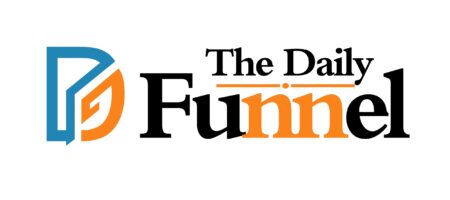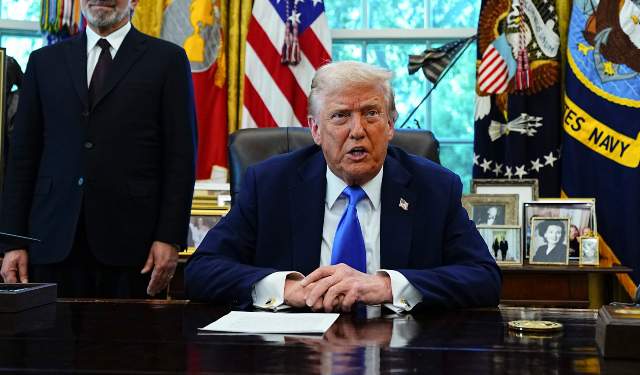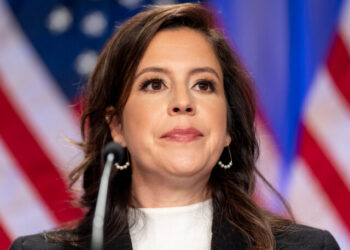President Donald Trump issued a proclamation accusing U.S. companies of sidelining skilled American graduates in favor of cheaper, mixed-skill, imported visa workers.
“The H-1B nonimmigrant visa program…. has been deliberately exploited to replace, rather than supplement, American workers with lower-paid, lower-skilled labor,” said Trump’s proclamation, which adds:
The large-scale replacement of American workers through systemic abuse of the program has undermined both our economic and national security.
The proclamation, titled “Restriction on Entry of Certain Nonimmigrant Workers,” directed agencies to charge a $100,000 fee for each foreigner hired via the H-1B program. It also instructed federal agencies to reduce fraud and keep entry-level jobs open for U.S. graduates. This move strikes at the heart of a program that has long tilted the labor market in favor of multinational corporations, which enjoy the benefit of cheaper labor while sidelining American professionals.
Commerce Secretary Howard Lutnick told reporters the message to U.S. employers was simple: “You’re going to train one of the recent graduates from one of the great universities across our land, train Americans… Stop bringing in people to take our jobs. That’s the policy here.”
The proclamation exposes what many working families have felt for decades—that an endless flow of imported workers depresses wages and forces Americans to the sidelines. It states 2.5 million visa workers now hold one-in-four tech jobs that would otherwise belong to American graduates. This is not an abstract statistic. It represents millions of careers delayed or derailed, countless families struggling under the weight of student loans, and the loss of innovation that happens when America’s best and brightest are denied a chance to lead in their own fields.
One sidelined professional, Katie Gallagher, described the human cost: “The stress of rejection is unbearable, along with the looming threat of financial insecurity. I have never felt depression like this before in my life.”
Still, the road to reform will not be simple. Lawyers for companies relying on H-1Bs have already identified loopholes. “This is only for the new H-1Bs coming from outside the country,” said Rehul Reddy, a Texas-based lawyer. “If somebody is already in the United States, if they are filing for a [three-year] extension of H-1B status, this proclamation is not applicable.” In other words, the entrenched workforce of at least 700,000 H-1Bs remains untouched for now.
Immigration lawyer Leon Fresco added, “The wording of the H-1B fee proclamation is very vague. But it appears… this $100,000 fee will not apply to foreign students at U.S. universities who are changing their status.” That carve-out matters because programs like Optional Practical Training (OPT) and Curricular Practical Training (CPT) already grant work permits to roughly 400,000 foreign graduates annually, effectively bypassing Congress and stacking the deck against Americans entering the workforce.
The fine print also allows industries to request exemptions if they claim foreign hires are in the “national interest.” Lawyer Paul Herzog noted, “Subsection (c) is the key… pretty much any employer can make an argument their H-1B worker is ‘in the national interest.’” Predictably, lawsuits are expected, with corporate interests eager to preserve their low-cost labor pipeline.
Bloomberg labeled the policy “Trump’s $100,000 H-1B Fee Invites Immediate Legal Challenges,” warning it “could also have devastating effects on businesses.” Yet Trump countered at the signing, “We need workers, we need great workers, and this pretty much ensures that is what is going to happen.” The difference is clear: under this policy, American workers are placed first, and businesses will have to prove the worth of foreign hires instead of defaulting to them.
The proclamation also introduced the concept of a $1 million “Gold Card” for select entrepreneurs and investors. While that section raised eyebrows, it underscored the administration’s attempt to align immigration with national interests, prioritizing contributors over cheap labor imports.
Still, critics argue the proclamation doesn’t go far enough. Advocacy groups for American tech workers point out that giants like Google and Microsoft exploit loopholes through student visas or alternative visa programs such as L-1s, effectively skirting the new restrictions. For real change, they argue, the administration must end the OPT program, which was created entirely by regulation.
The proclamation also delivered striking data. Between 2000 and 2019, the number of foreign STEM workers more than doubled, rising from 1.2 million to almost 2.5 million, while overall STEM employment grew only 44.5 percent. In computer and math occupations, the foreign share jumped from 17.7 percent to 26.1 percent. Abuse of the H-1B visa has been a “key facilitator” of that surge, according to the document.
The numbers show what Americans already know from lived experience. Jobs are being outsourced in plain sight. The proclamation cited cases where companies laid off thousands of American workers even as they were approved for thousands of new H-1B hires. One firm eliminated 2,400 jobs in Oregon while securing 1,700 foreign workers. Another cut 27,000 Americans while being approved for over 25,000 H-1Bs. This is not competition—it is replacement.
Some Indian visa workers now fear the proclamation will force them to return. “The gravy train is up, you’re all going home,” one American said during an online meeting of Indian workers. Others boasted America’s economy would collapse without them—a claim that insults the ingenuity and work ethic of U.S. graduates who built the very industries being outsourced.
For three decades, bureaucrats, corporations, and political elites have ignored the damage while taxpayers footed the bill. Trump’s proclamation is more than a policy—it’s a warning shot to restore fairness, uphold national security, and finally put American workers back where they belong: at the center of the American economy.




















